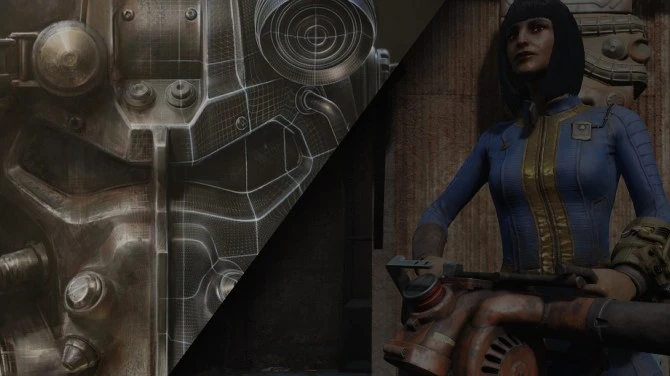UI installation with DarN is a very flaky process, and its not necessarily DarN's fault but UI in Oblivion is just very hit-or-miss.
So this article is about addressing some common symptoms, their causes, and ways to fix them. Let's get to it!
- This is likely a result of not having the Oblivion.ini with the right font settings for the DarN install.
- Perform the section at the bottom of this article regarding how to create a clean ini and back it up
- Now that your ini is backed up, let's do some simple editing to make DarN UI work. First, open your ini with a text editor and find the lines for [Font]. Should look something like this:
[Fonts]
SFontFile_1=Data\Fonts\Kingthings_Regular.fnt
SFontFile_2=Data\Fonts\Kingthings_Shadowed.fnt
SFontFile_3=Data\Fonts\Tahoma_Bold_Small.fnt
SFontFile_4=Data\Fonts\Daedric_Font.fnt
SFontFile_5=Data\Fonts\Handwritten.fnt
These are the lines you need to replace according to the directions to install whatever UI you are using. My recommendation is to copy these and paste them right below, then comment them out. It would look something like this:
[Fonts]
; SFontFile_1=Data\Fonts\Kingthings_Regular.fnt
; SFontFile_2=Data\Fonts\Kingthings_Shadowed.fnt
; SFontFile_3=Data\Fonts\Tahoma_Bold_Small.fnt
; SFontFile_4=Data\Fonts\Daedric_Font.fnt
; SFontFile_5=Data\Fonts\Handwritten.fnt
SFontFile_1=Data\Fonts\___CUSTOM_FONT_1_GOES_HERE.fnt
SFontFile_2=Data\Fonts\___CUSTOM_FONT_2_GOES_HERE.fnt
SFontFile_3=Data\Fonts\___CUSTOM_FONT_3_GOES_HERE.fnt
SFontFile_4=Data\Fonts\___CUSTOM_FONT_4_GOES_HERE.fnt
SFontFile_5=Data\Fonts\Handwritten.fnt
But first, you should make sure you have the fonts you're about to replace these with installed! So if you've already installed DarN UI, using either the OMOD or manual method (I recommend manual as it really isn't THAT hard, but we'll get to that later) you need to navigate to your Oblivion/Data directory, and you should see a folder in that directory called 'Fonts'. If you open that folder up, you should be able to find each of the fonts that were installed by DarN and that you want to use. I've used the ___CUSTOM_FONT_1_GOES_HERE.fnt placeholder above to indicate what those files will be. In my case, these files happen to be:
sfontfile_1=Data\Fonts\DarN_Knights_Quest_36.fnt
sfontfile_2=Data\Fonts\DarN_Kingthings_Petrock_14.fnt
sfontfile_3=Data\Fonts\DarN_Kingthings_Petrock_16.fnt
sfontfile_4=Data\Fonts\DarN_Oblivion_28.fnt
SFontFile_5=Data\Fonts\Handwritten.fnt
Again, I know these font files exist because I can go to my Data directory, open the 'Fonts' folder, and see that each of these font files are there. So nothing is going to blow up, and I know my ini is set correctly.
- My biggest recommendatioon for this is that you just use Mod Organizer. Becuase MO allows you to use "Ini Tweaks" when a certain mod is activated in the mod list. So, for instance, I installed DarN manually (see my walkthrough article), and copied its mod data into a folder inside the Mod Organizer/mods/ directory (called Base DarN and Dark DarN). Then, if I right click on those mods in Mod Organizer, select the "Information" context option, another window appears and a tab for "Ini-Files" is shown. In this tab, in the panel called "Ini-Tweaks", I can right-click that space and an option for "Create Tweak" is given; click that. Enter a name for your tweak - it has no meaning except to you, I just called mine "Font", and to the right in the big blank panel, you should see a Text Edit area. Instead of making any adjustment to your Oblivion.ini with the requested DarN fonts, you should just paste the ini settings for the fonts into this text edit area. For instance, my Ini-Tweak called 'Font' contains the lines:
[Fonts]
sfontfile_1=Data\Fonts\DarN_Knights_Quest_36.fnt
sfontfile_2=Data\Fonts\DarN_Kingthings_Petrock_14.fnt
sfontfile_3=Data\Fonts\DarN_Kingthings_Petrock_16.fnt
sfontfile_4=Data\Fonts\DarN_Oblivion_28.fnt
SFontFile_5=Data\Fonts\Handwritten.fnt
Now, whenver I want to switch UI options, I don't have to edit my Oblivion.ini, I just untick the mod in MO and these lines are never read from the Oblivion.ini that MO uses. Easy as pie!
Its hard to describe exactly what this looks like but you'll know what I'm talking about if you have it. This results from using a FoV other than 75. In your Oblivion.ini in your My Games directory, there is a line, something like fDefaultFOV=xx. If 'xx' is anything other than 75.0000, you're going to want to create a fresh Oblivion.ini. The best thing to do is create a clean ini and use the clean ini as outlined in the section at the bottom of this page regarding how to create a clean ini and back it up. You should notice any FoV settings in the ini have returned to 75.0000; don't mess with FoV in the ini, or edit the FoV in the game at all using console commands. Instead, use a mod like Enhanced Camera (I think has the ability for custom FoV's?) or Oblivion Reloaded or similar.
This is obviously the worst case-scenario, and when it comes to suspecting it has something to do with UI installation, its extraordinarily hard to determine where the real fault lies here. It could be from a badly formatted .xml file, a corrupted .bsa archive, a bad Oblivion.ini setting, etc. But believe me when I say - I've had probably the most experience in getting UI in this game to work and I know that if this procedure doesn't solve your problem, your problem doesn't stem from UI and you should consider other options.
Okay, so...where do we start?
1. Do the clean Ini! Perform the steps for making and Clean Ini and Backing It Up at the bottom of this article, and then...don't touch the ini again.
2. Launch the game and see if it still CTD. If it does...do not lose hope, as I didn't actually expect that step to solve the problem, but it is going to help in making sure nothing else is wrong either. If your game doesn't CTD after starting with a clean ini, then...congratulations, I guess. I recommend you still continue performing the following steps.
3. Uninstall anything that might be related to your UI using mod managing software first. For instance, mods like HUD Status Bars, DarN, this mod...try to uninstall the mods through OBMM, Wrye Bash, MO...whatever you installed them with, try to uninstall them with the same.
4. Oblivion doesn't come with folders for 'Fonts' or 'Menus' in the Oblivion/Data/ directory. If you have any folders with those names after doing the above steps, delete them. In addition, there are no folders initially for Oblivion/Data/Meshes/menus or Oblivion/Data/Textures/menus either, so if you find any of those, you can delete those as well too. You may also see folders like 'menus50' or 'menus80' - I'm quite sure these refer to different FoV settings but the point is: these folders shouldn't be there either - delete them too.
5. Try relaunching Oblivion after this to see if it still CTD.
- If it doesn't, continue loading up the game and try playing as you normally would for about 10 minutes. Open up some container/loot menus, do some shopping, drop 40 arrows, trick the Adoring Fan into blundering into his doom off the highest point in Oblivion, etc. If nothing blows up, you should be okay to proceed. Try reinstalling your UI mods again and this time, follow the README's and if something doesn't seem quite right, don't be afraid to ask for help on this mod page or on the actual page of whatever mod you are trying to install.
- If it does still CTD, have no worries, we're not done with troubleshooting yet. From this point, my recommendation would be to uninstall all of your mods, and if you have Steam, delete all the folders in the Oblivion/Data/directory (you DON'T need to delete all of the .esp, .esm, or .bsa files!), and have Steam Verify the Integrity and reinstall the folders Oblivion actually needs in your Data directory. Most importantly, this means also uninstalling OBSE, especially any OBSE plugins. It would likely be good practice to keep a backup of the ini's for your plugins. Don't restore these backups if you reinstall these plugins later, but instead use them to remind yourself of the values you had set previously for these plugins and compare with them with the default values of the clean, fresh plugin.
8. Once you've uninstalled OBSE, all your OBSE plugins, and any folders in your Oblivion/Data/ directory that shouldn't be there, try starting the game again. Launch the game from Steam if that's where your Oblivion copy comes from, otherwise launch using the OblivionLauncher.exe. If the game is really still CTD at this point, then you're issue is far beyond any UI mod and you'll likely have to just reinstall Oblivion at this point. You may feel free to request help again at this page, though, just to make sure you've exhausted all options before completely nuking your game.
- Browse to your Documents/My Games/Oblivion directory and delete the Oblivion.ini file there. If you use Mod Organizer, go ahead and navigate to your profile's directory and delete the ini there as well. Start totally fresh with your ini's!
- Next, fire up the Oblivion Launcher, either through Steam by launching the game or manually by clicking the OblivionLauncher.exe. With the launcher loaded up, select 'Options' and you should be greeted by a prompt saying it is updating your settings based on your hardware. Go ahead and let it do that, make any settings you need to your video settings afterwards, and just exit out of the 'Options' menu and the Oblivion Launcher. If you're using MO, do the above step and ALSO launch the Oblivion Launcher from within Mod Organizer, and repeat the process.
- With your nice, fresh ini ready...BACK IT UP. Save it to some place that's easy to access and you won't forget about it. I just have a folder in my Oblivion directory called 'Backups' and keep my fresh ini copied in there.
- Now, just don't edit your ini directly. Either use Mod Organizer and its Ini tweaks, or Wrye Bash and its Ini Tweaks, or just don't edit your ini at all.
Font/Text Looks Weird
UI Is Scaled Weird/Cinema-Like
Oblivion CTD
Making a Clean Ini and Backing It Up









0 comments